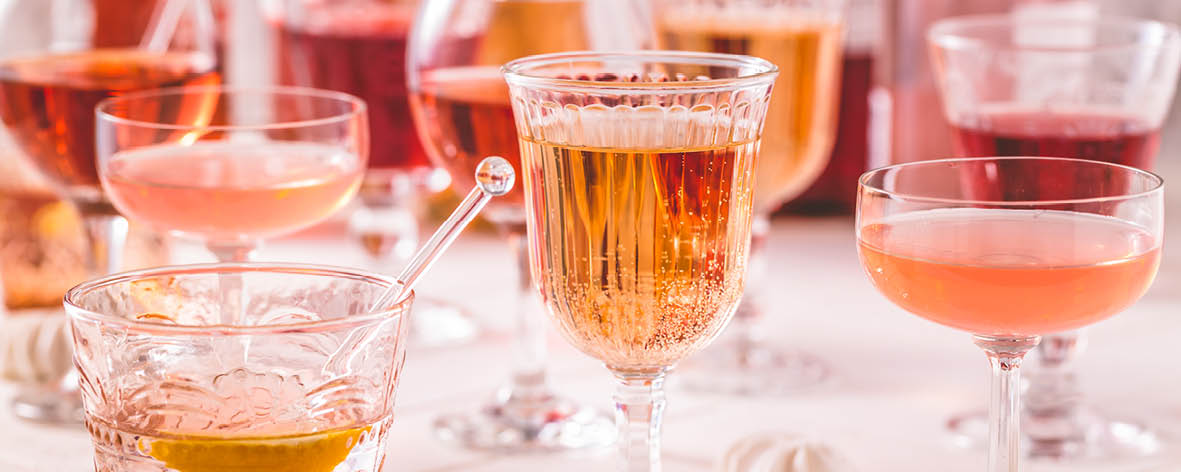Does it really matter which glass you use … we investigate

There’s no denying that there is a huge variety of glassware available. There’s Champagne coupes, flutes, highballs, martini glasses, pint glasses, shot glasses, red wine, white wine; in fact the list seems never ending. With so many choices available the question has to be asked, “does it really matter what type of glass you use”? Surely a glass of sparkling wine will taste exactly the same whether it’s consumed from a tumbler, a pint glass or a Champagne flute. Does it really make a difference to the flavour and the way we drink?
The short answer is “yes”, the glassware you use can impact the flavour, aroma, texture, serving size, temperature, and overall drinking experience. Below we’ll explain some of the differences in design and why pairing your beverage with the correct vessel can benefit your overall drinking experience.
Coupes, flutes, and tulips are the most popular choices for enjoying Champagne and sparkling wine. Champagne coupes originated in England in the late 1830s. They have a shallow dish and a broad opening, and are known more for their beauty versus practicality, as sparkling wine served in a coupe will not retain its effervescence as well as a flute or tulip. Flutes, promote aroma and flavour. In contrast to the coupe, they have a smaller opening and are taller, promoting and preserving carbonation. Similarly, tulips have a narrow opening that widens in the middle before narrowing again, promoting aeration and aroma. All wine glasses are designed specifically so that the rim curves inward to direct the smell of the wine towards your nose.
Red wine and white wine should also be consumed in different glasses. Red wine is often more full-bodied in flavour and texture, so the larger bowl of a red wine glass allows the wine to aerate and for the flavours to “open up”, whereas the smaller bowl of a white wine glass helps to preserve the cooler temperature and aroma of the wine. The stem of a white wine glass is also longer than that of a red wine glass; this is to create a greater distance between your hand and the wine and avoid the heat of your hands affecting the temperature of the wine.
Beer glasses are designed following the same principles of promoting aroma towards the nose and enhancing the flavour of the beer. Like a fine wine, beer can benefit from being served in a glass that matches the style of the beer. A pint glass is a good standard for a pale ale or a stout for example but a lighter, fruitier beer like a pilsner will benefit from being served in a taller, slimmer pilsner glass.
When choosing a cocktail glass, consider the garnish, texture, and liquid volume of the drink. For example, a martini glass is traditionally used for stirred and shaken cocktails that are served straight up. The liquid volume of the glass is smaller, and the opening of the glass is large; this design encourages the drinker to sip and savour the drink. These glasses are not designed to hold ice, so if you are serving something on the rocks choose an old-fashioned glass (generally smaller and short). Long drinks, like a mojito, require lots of ice and garnish so are best enjoyed in a tall glass. Often fruity, sweet, or citrus-driven drinks are served tall and designed to be enjoyed with more fervour.

